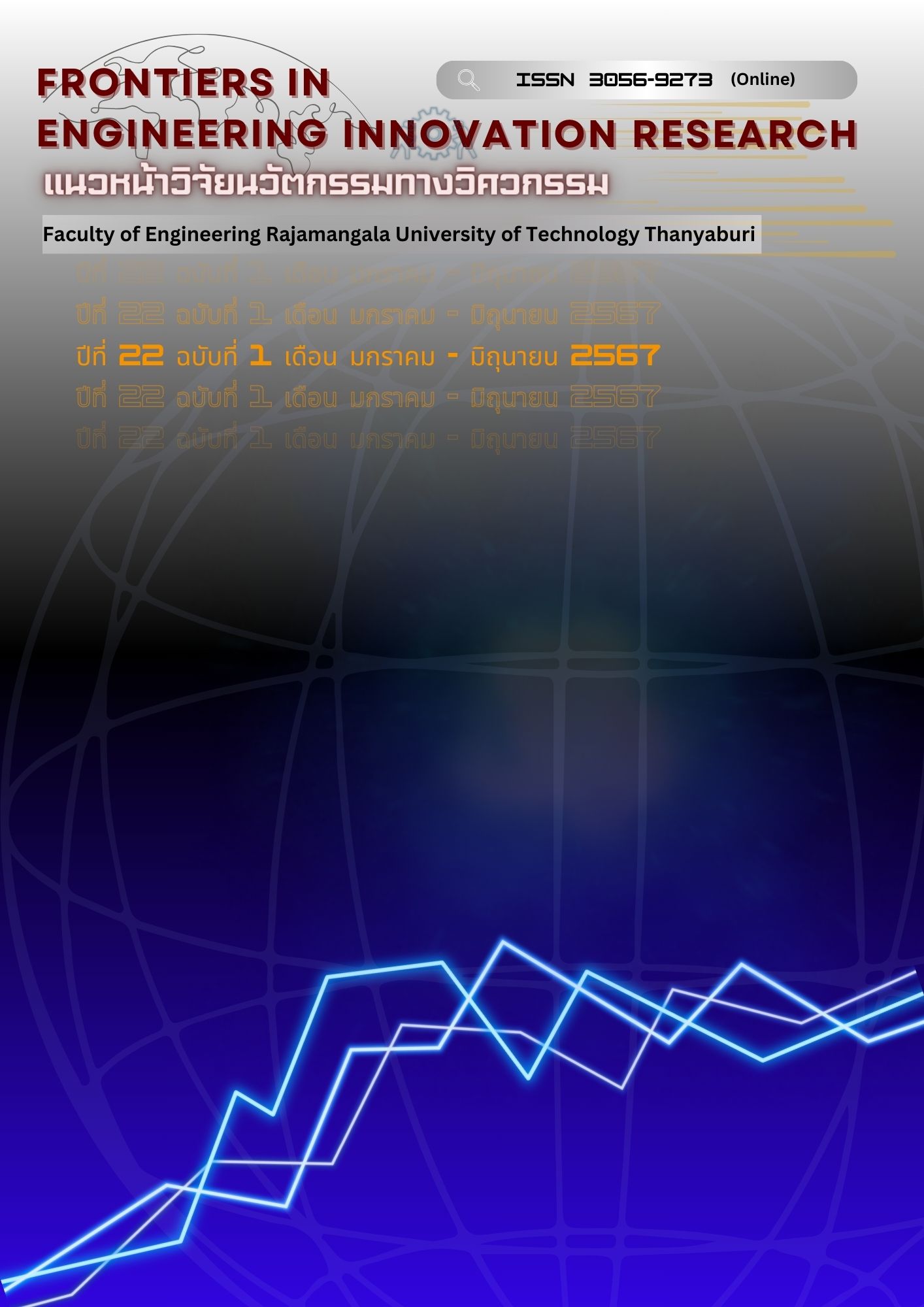Flooring Blocks for Drying Agricultural Products by using Quarry Rock as Aggregate with Coarse Bagasse Ash Partially Replace Quarry Rock and Fine Bagasse Ash Partially Replace Cement
Main Article Content
Abstract
Currently, quarry rock and bagasse ash are waste materials in many industrial factories that need to be added to add value. The objective of this research is to study the use of quarry rock as a replacement for all sand in concrete production. The coarse bagasse ash partially replaced some of the quarry rock, and fine bagasse ash partially replaced cement. The ratio of hydraulic cement ingredients: fine bagasse ash (size passes through sieve number 325): coarse bagasse ash (size through sieve number 8 and remaining through sieve number 325): quarry rock equal to 1: 0: 0: 5, 0.85: 0.15: 0.05: 4.95, 0.85: 0.15: 0.10: 4.90, 0.85: 0.15: 0.15: 4.85, 0.85: 0.15: 0.20: 4.80, and 0.85: 0.15: 0.25: 4.75 by weight, respectively. The water: cement ratio (w/c) was kept at 0.4 by weight. There are two types of floor block compactor: 30 x 30 x 5 centimeters, properties tested according to TIS 378-2531 standards regarding concrete floor tiles and a crooked dagger-shaped floor paving block, size 11.5 x 22.5 x 6 centimeters, properties tested according to TIS 827-2565 standards regarding interlocking concrete floor paving blocks. The results showed that the compressive strength increased when coarse bagasse ash was used instead of quarry rock while bending strength and density tended to decrease. For water absorption, there is a tendency to increase. Concrete floor tiles mixed with bagasse ash at a ratio of 0.85: 0.15: 0.25: 4.75 and interlocking concrete blocks for floors mixed with bagasse ash with a ratio of 0.85: 0.15: 0.20: 4.80 provided the highest amount of bagasse ash. The flooring blocks still meet the required standard criteria. When used to dry agricultural products, fine bagasse ash should be used to replace only part of the cement.
Article Details

This work is licensed under a Creative Commons Attribution-NonCommercial-NoDerivatives 4.0 International License.
The manuscript, information, content, picture and so forth which were published on Frontiers in engineering innovation research has been a copyright of this journal only. There is not allow anyone or any organize to duplicate all content or some document for unethical publication.
References
Khamput P, Compressive strength of mortars mixing with fly ash and crushed dust. International Conference on Engineering, Applied Sciences, and Technology (ICEAST 2007), 2007 November 21-23; The Swissôtel Le Concorde, Bangkok; 2007. p.452-5.
Menadi B, Kenai S, Khatib J, Aït-Mokhtar A. Strength and durability of concrete incorporating crushed limestone sand. Construction and Building Materials. 2009;23(2):625-33.
Rajput S. P. An experimental study on crushed stone dust as fine aggregate in cement concrete. Materials Today: Proceedings. 2018;5(9):17540-47.
Chaikaew Ch, Wongprachum W. The compaction of concrete using dust stone substitute sand. The Journal of Industrial Technology Suan Sunandha Rajabhat University. 2018;6(2):63-71. (in Thai).
Choosakul Ch, Yongsata K. Compressive strength of mortar using the mineral dust partial replacement in sand. Rajamangala University of Technology Srivijaya Research Journal. 2018;10(2):324-32. (in Thai).
Ganesan K, Rajagopal K, Thangavel K. Evaluation of bagasse ash as supplementary cementitious material. Journal of Cement and Concrete Composites. 2007;29:515.
Srinivasan R, Sathiya K. Experimental study on bagasse ash in concrete. International Journal of Service Learning in Engineering. 2010;5(2):60.
Singh N. B., Singh V. D., Rai S. Hydration of bagasse ash-blended Portland cement. Journal of Cement and Concrete Research. 2000;30:1485.
Rukzon S, Chindaprasirt P. Utilization of bagasse ash in high strength concrete. Journal of Materials and Design. 2012;34:45
Aigbodion V.S., Hassan S.B., Ause T, Nyior G.B. Potential utilization of solid waste (bagasse ash). Journal of Minerals & Materials Characterization & Engineering. 2010;9:67-77.
Thai Industrial Standards Institute. TIS.2594-2556. Standard for hydraulic cement. Ministry of industry. Bangkok; 2013. (in Thai).
Thai Industrial Standards Institute. TIS.378-2531. Standard for concrete floor tile. Ministry of industry. Bangkok; 1988. (in Thai).
Thai Industrial Standards Institute. TIS. 827-2565. Standard for Interlocking concrete paving blocks. Ministry of industry. Bangkok; 2022. (in Thai).
Chatveera B, Promsawat P. Effect of bagasse ash replacement in fine aggregate on mechanical properties of plastering cement. Research and Development Journal. 2009;20(1):59-68.
Chindaprasirt P, Jaturapitakkul C. Cement Pozzolanic and concrete. 7thed. Bangkok: Thailand Concrete Association; 2012. (in Thai).
Modania P O, Vyawahare M.R. Utilization of Bagasse Ash as a Partial replacement of fine aggregate in concrete. Procedia Engineering. 2013;51:25–9.
Khamput P, Tantavoranart S, Suweero K. Improving the thermal insulation properties of the concrete block with EVA plastic scrap. KKU-IENC2014, 2014 March 27-29; Pullman KhonKaen Raja Orchid Hotel; 2014. p.12.


